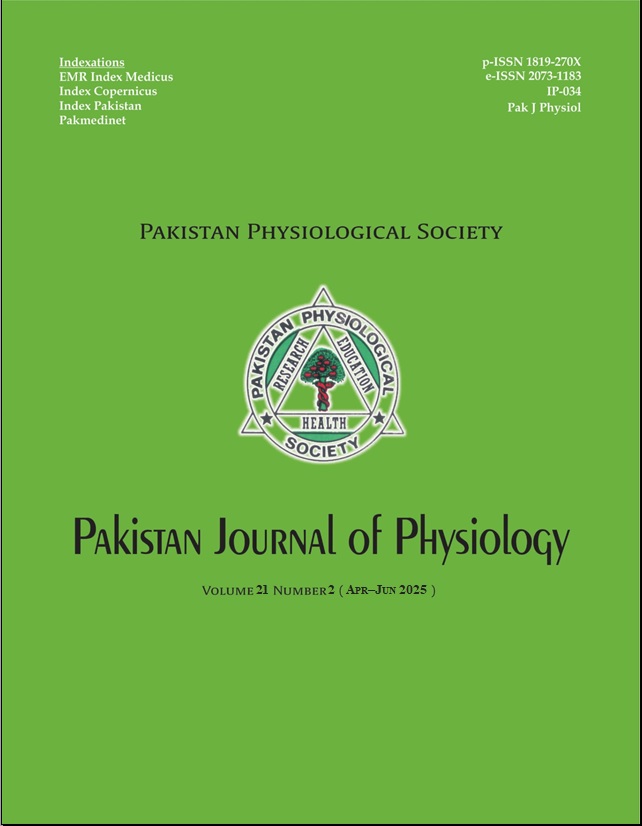A PROSPECTIVE COMPARISON OF NON-OPERATIVE AND OPERATIVE MANAGEMENT OF HUMERUS MID-SHAFT FRACTURESA PROSPECTIVE COMPARISON OF NON-OPERATIVE AND OPERATIVE MANAGEMENT OF HUMERUS MID-SHAFT FRACTURES
DOI:
https://doi.org/10.69656/pjp.v21i2.1726Keywords:
High energy trauma, Humerus fracture, Internal fixation, Non-operative technique, Open reductionAbstract
Background: Humerus shaft fractures are common long bone fractures and the treatment options range from conventional plaster application to plate osteosynthesis. This study aimed to determine outcomes of non-operative vs operative techniques in managing mid-shaft humerus fractures. Methods: This randomized control trial was conducted in Department of Orthopaedics, Ayub Teaching Hospital, Abbottabad, from 10 Oct 2022 to 9 Apr 2023. Patients aged 20–70 years with unilateral, displaced, and closed humeral shaft fracture were included using non-probability consecutive sampling, after approval of hospital ethical committee and written informed consent of patients. Patients were randomly divided into two groups. Patients in group A were treated with operative technique and patients in group B were treated with non-operative technique. Outcomes were observed on 12 weeks’ follow-up. Data was entered and analyzed using SPSS-22. Results: One-hundred-fifty patients were enrolled, 75 patients in each group. Mean age was 43.75±14.7 years in group A and 40.64±14.9 years in group B. There were 58.7% males in group A and 61.3% in group B. Females were 41.3% in group A and 38.7% in group B. In group A non-union was present in 5.3%, malunion in 10%, and radial nerve injury in 5.3% patients. In group B non-union was present in 17.3%, malunion in 26.7% and radial nerve injury in 21.3% patients. All these showed statistically significant difference with p-value 0.020, 0.041 and 0.004 respectively. Conclusion: Operative technique is better than non-operative technique in management of mid-shaft humerus fracture.
Pak J Physiol 2025;21(2):34-37, DOI: https://doi.org/10.69656/pjp.v21i2.1726
Downloads
References
Naclerio E, McKee M. Approach to humeral shaft nonunion: evaluation and surgical techniques. J Am Acad Orthop Surg 2022;30(2):50–9.
Oliver WM, Molyneux SG, White TO, Clement ND, Duckworth AD. Routine fixation of humeral shaft fractures is cost-effective: cost-utility analysis of 215 patients at a mean of five years following nonoperative management. Bone Jt Open 2022;3(7):566–72.
Rämö L, Sumrein BO, Lepola V, Lähdeoja T, Ranstam J, Paavola M. Effect of surgery vs functional bracing on functional outcome among patients with closed displaced humeral shaft fractures: The FISH randomized clinical trial. JAMA 2020;323(18):1792–801.
Gallusser N, Barimani B, Vauclair F. Humeral shaft fractures. EFORT Open Rev 2021;6(1):24–34.
Patino JM, Ramella JC, Michelini AE, Abdon IM, Rodriguez EF, Corna AFR. Plates vs nails in humeral shaft fractures: Do plates lead to a better shoulder function? JSES Int 2021;5(4):765–8.
Hu Y, Wu T, Li B, Huang Y, Huang C, Luo Y. Efficacy and safety evaluation of intramedullary nail and locking compression plate in the treatment of humeral shaft fractures: A systematic review and meta-analysis. Comput Math Methods Med 2022;2022:5759233.
Wen H, Zhu S, Li C, Chen Z, Yang H, Xu Y. Antegrade intramedullary nail versus plate fixation in the treatment of humeral shaft fractures: An update meta-analysis. Medicine (Baltimore) 2019;98(46):e17952.
Denard A Jr, Richards JE, Obremskey WT, Tucker MC, Floyd M, Herzog GA. Outcome of nonoperative vs operative treatment of humeral shaft fractures: A retrospective study of 213 patients. Orthopedics 2010;33(8).
Shields E, Sundem L, Childs S, Maceroli M, Humphrey C, Ketz JP, et al. The impact of residual angulation on patient reported functional outcome scores after non-operative treatment for humeral shaft fractures. Injury 2016;47(4):914–8.
Papasoulis E, Drosos GI, Ververidis AN, Verettas DA. Functional bracing of humeral shaft fractures: a review of clinical studies. Injury 2010;41(7):e21–7.
Ali E, Griffiths D, Obi N, Tytherleigh-Strong G, Van Rensburg L. Nonoperative treatment of humeral shaft fractures revisited. J Shoulder Elbow Surg 2015;24(2):210–4.
Singisetti K, Ambedkar M. Nailing versus plating in humerus shaft fractures: a prospective comparative study. Int Orthop 2010;34(4):571–6.
Hee HT, Low BY, See HF. Surgical results of open reduction and plating of humeral shaft fractures. Ann Acad Med Singap 1998;27(6):772–5.
Streufert BD, Eaford I, Sellers TR, Christensen JT, Maxson B, Infante A, et al. Iatrogenic nerve palsy occurs with anterior and posterior approaches for humeral shaft fixation. J Orthop Trauma 2020;34(3):163–8.
Sargeant HW, Farrow L, Barker S, Kumar K. Operative versus non-operative treatment of humeral shaft fractures: A systematic review. Shoulder Elbow 2020;12(4):229–42.
Downloads
Published
How to Cite
Issue
Section
License
Copyright (c) 2025 Masel Khan, Muhammad Basharat, Faheem Sabir, Muhammad Usama, Muhammad Naveed, Babar Shahzad Sadiq, Muhammad Ali Usman

This work is licensed under a Creative Commons Attribution-NoDerivatives 4.0 International License.
The author(s) retain the copyrights and allow their publication in Pakistan Journal of Physiology, Pak J Physiol, PJP to be FREE for research and academic purposes. It can be downloaded and stored, printed, presented, projected, cited and quoted with full reference of, and acknowledgement to the author(s) and the PJP. The contents are published with an international CC-BY-ND-4.0 License.











